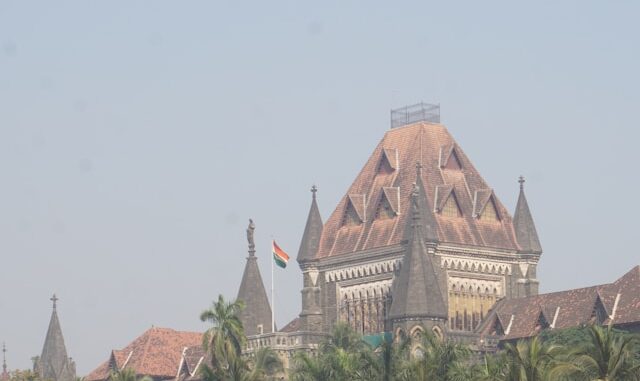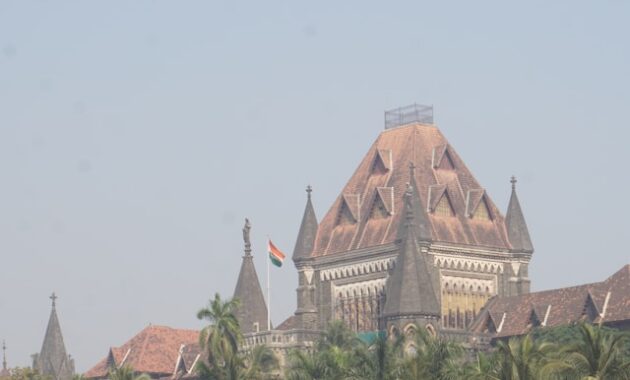
Mumbai, formerly known as Bombay, is a city where history and modernity coexist seamlessly. Among its towering skyscrapers and bustling streets, one can find stunning remnants of British-era architecture that tell a story of a time when Mumbai was the crown jewel of the British Raj. The colonial architecture in Mumbai showcases a rich blend of Victorian Gothic, Indo-Saracenic, and Neoclassical styles, which continue to shape the city’s landscape. Let us take a walk through Mumbai’s British-era past, exploring the most iconic landmarks that stand as architectural marvels today.
Gateway of India: The Iconic Colonial Landmark
No discussion of Mumbai’s colonial architecture is complete without mentioning the Gateway of India. Built in 1924, this magnificent Indo-Saracenic archway was constructed to commemorate the visit of King George V and Queen Mary to India in 1911. Situated at Apollo Bunder, overlooking the Arabian Sea, it remains one of the most famous historical landmarks of Mumbai. The intricate latticework, grand arches, and Islamic-style domes blend seamlessly with European architectural influences, making it a must-visit destination.
Chhatrapati Shivaji Maharaj Terminus: A Gothic Revival Masterpiece
Formerly known as Victoria Terminus (VT), the Chhatrapati Shivaji Maharaj Terminus (CSMT) is a UNESCO World Heritage Site and one of the most outstanding examples of Victorian Gothic Revival architecture in India. Designed by Frederick William Stevens, the structure was completed in 1887 to commemorate Queen Victoria’s Golden Jubilee. The ornate turrets, pointed arches, stained glass windows, and intricate stone carvings make it an awe-inspiring architectural masterpiece. The fusion of Indian and Western elements, seen in the sculpted figures of animals and mythical creatures, adds to its uniqueness.
The Bombay High Court: A Marvel of Gothic Architecture

Built between 1871 and 1878, the Bombay High Court is a perfect representation of Gothic Revival architecture. Designed by Colonel J.A. Fuller, the building features pointed arches, ribbed vaults, and flying buttresses, reminiscent of medieval European cathedrals. The black basalt façade, soaring towers, and sculpted figures give it a distinctive grandeur. Interestingly, the statues of Justice and Mercy stand atop the structure, symbolizing the court’s role in upholding fairness and law.
The Prince of Wales Museum: Indo-Saracenic Splendor
Now known as the Chhatrapati Shivaji Maharaj Vastu Sangrahalaya (CSMVS), this museum is an outstanding example of Indo-Saracenic architecture. Built in 1914 to honor the visit of Prince George V, it exhibits a fascinating blend of Hindu, Islamic, and British architectural elements. The domed structure, arched windows, and intricate stonework make it a visual delight. The museum houses an extensive collection of art, sculptures, and artifacts that showcase India’s rich history and culture.
Flora Fountain and the Gothic Revival Charm of Fort Area
Located in the heart of South Mumbai, Flora Fountain is a beautifully sculpted heritage landmark built in 1864 in honor of Sir Bartle Frere, the Governor of Bombay. It stands in the historic Fort area, which is home to several stunning examples of British colonial architecture, including Horniman Circle, St. Thomas Cathedral, and the Asiatic Library. The intricate carvings, domed roofs, and European-style balconies in this district transport visitors back to the British colonial era.
David Sassoon Library and Reading Room: A Legacy of Jewish Philanthropy
One of Mumbai’s oldest libraries, the David Sassoon Library and Reading Room, was built in 1870 in the Gothic style. The library was named after David Sassoon, a prominent Jewish philanthropist who played a significant role in the city’s development. With its arched windows, sloping roofs, and elegant interiors, it remains a treasured space for book lovers and historians alike.
Rajabai Clock Tower: India’s Answer to Big Ben
Standing tall within the University of Mumbai campus, the Rajabai Clock Tower is a breathtaking fusion of Venetian and Gothic Revival styles. Designed by Sir George Gilbert Scott, this 280-foot-tall tower was modeled after London’s Big Ben. The intricate stained-glass windows and finely detailed carvings reflect the grandeur of British-era architecture. The tower was funded by Premchand Roychand, a wealthy stockbroker, in honor of his blind mother, Rajabai.
Ballard Estate: A Slice of London in Mumbai
If you wish to experience Edwardian architecture in Mumbai, a visit to Ballard Estate is a must. Designed by George Wittet, who also conceptualized the Gateway of India, this business district is characterized by grand stone buildings, arcades, and wide streets. Built in the early 20th century, Ballard Estate was inspired by the London Docklands and continues to serve as a hub for commercial offices and shipping companies.
Taj Mahal Palace Hotel: An Architectural Gem by the Sea
The Taj Mahal Palace Hotel, built in 1903, is a fine example of Indo-Saracenic architecture with touches of Islamic, Renaissance, and Gothic elements. Designed by W.A. Chambers, this luxury hotel has played host to world leaders, celebrities, and dignitaries for over a century. The graceful domes, curved balconies, and grand interiors make it an enduring symbol of Mumbai’s colonial heritage.
Conclusion: Preserving Mumbai’s Architectural Heritage
Mumbai’s colonial-era buildings continue to stand as testaments to its grand past, blending European elegance with Indian craftsmanship. Walking through the streets of South Mumbai, one can witness the rich architectural legacy left behind by the British, a legacy that the city continues to cherish and preserve. The fusion of styles, intricate detailing, and historical significance make these structures an essential part of Mumbai’s identity.